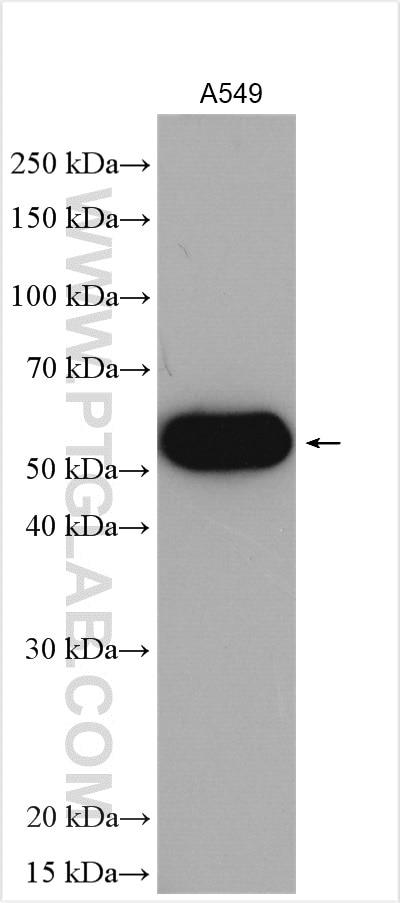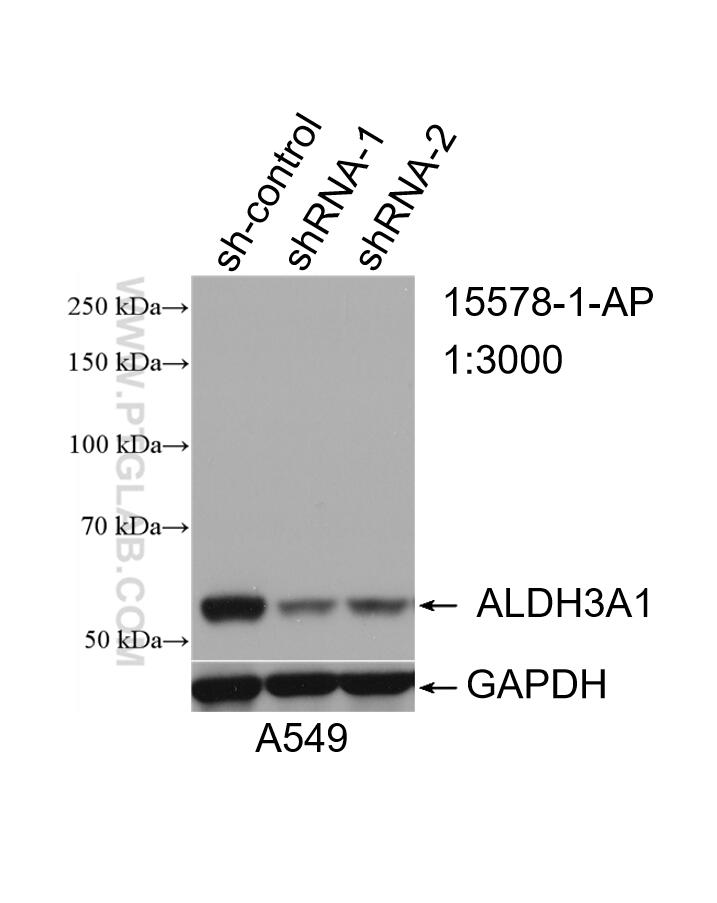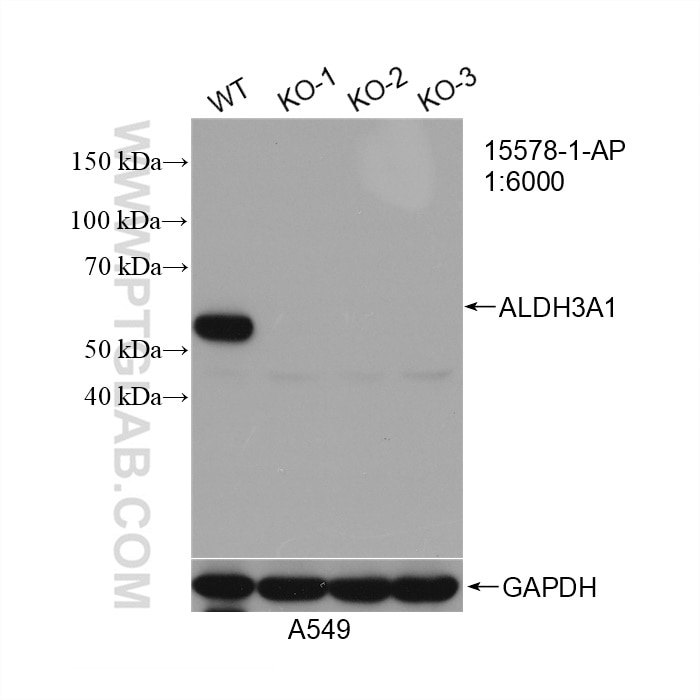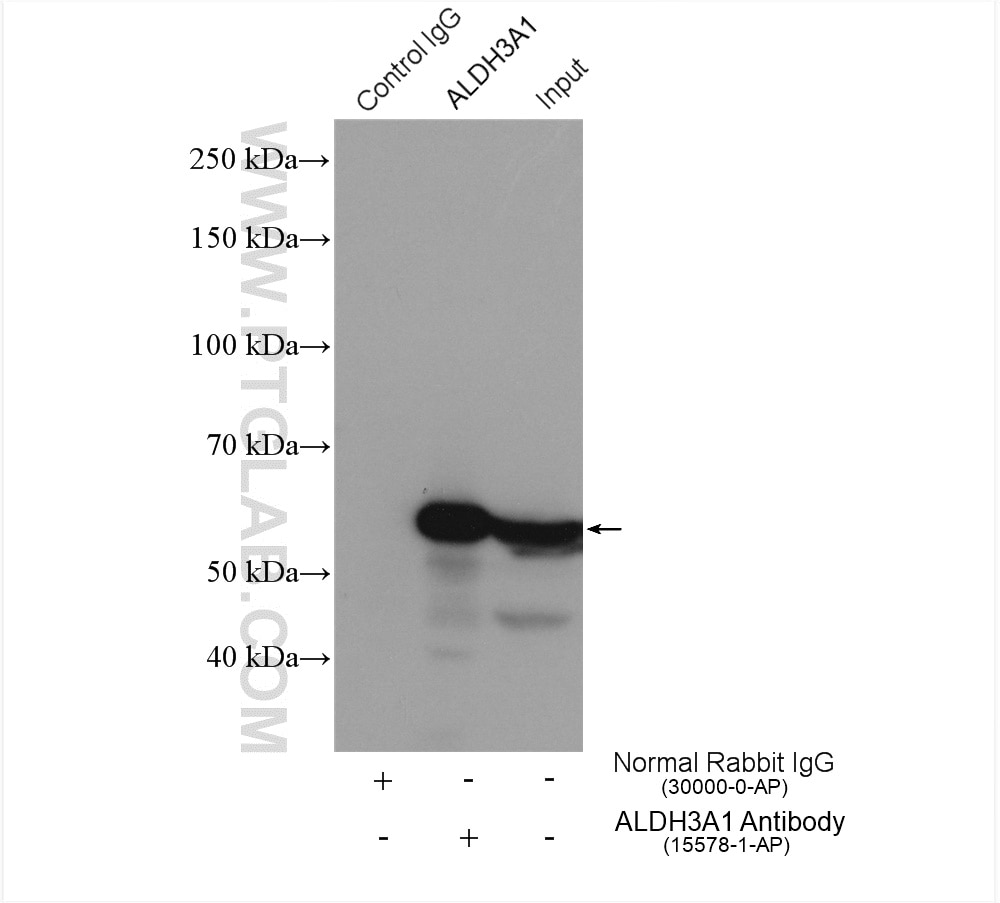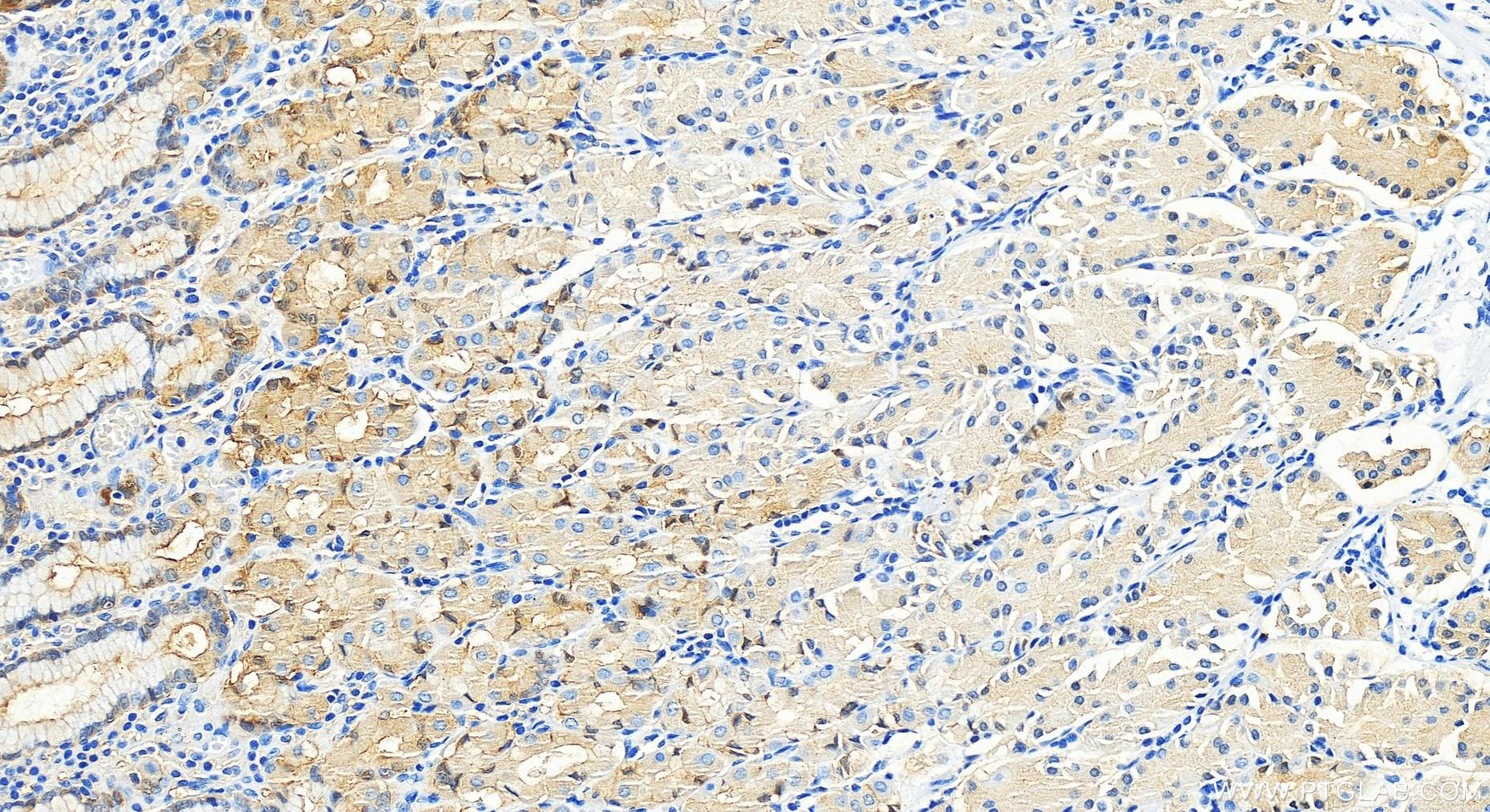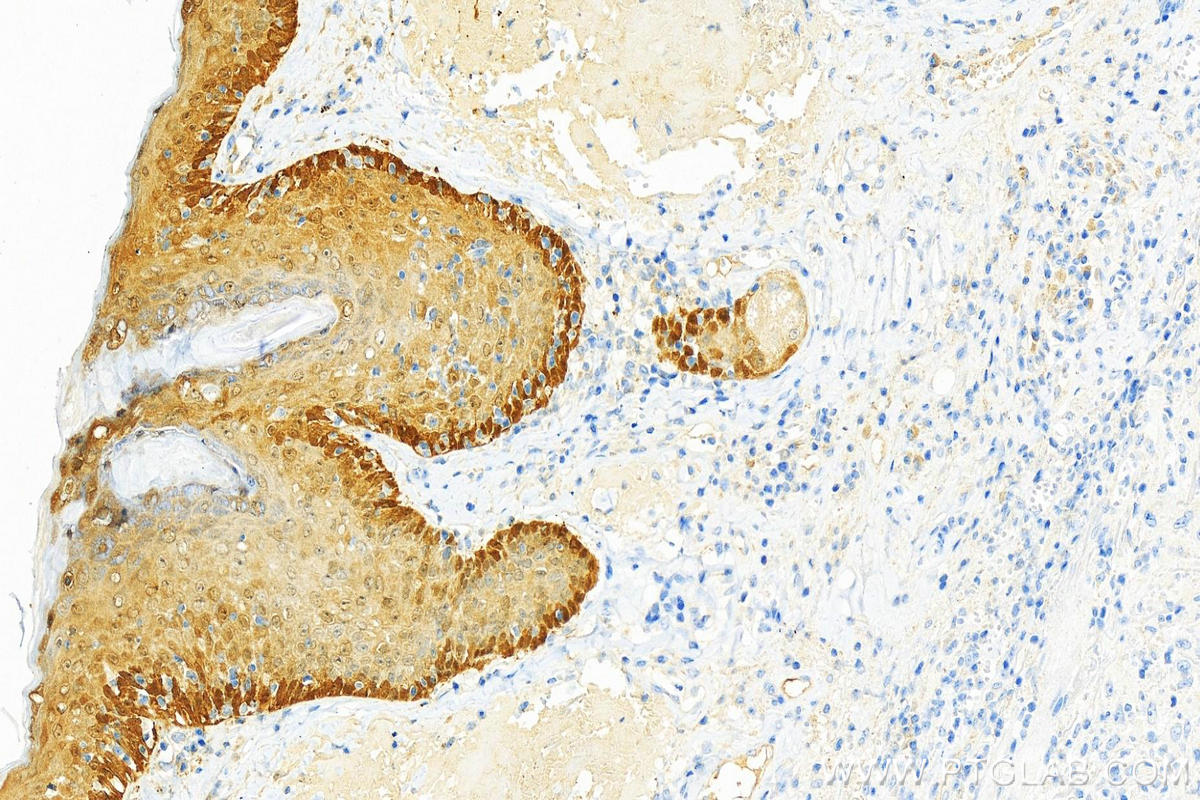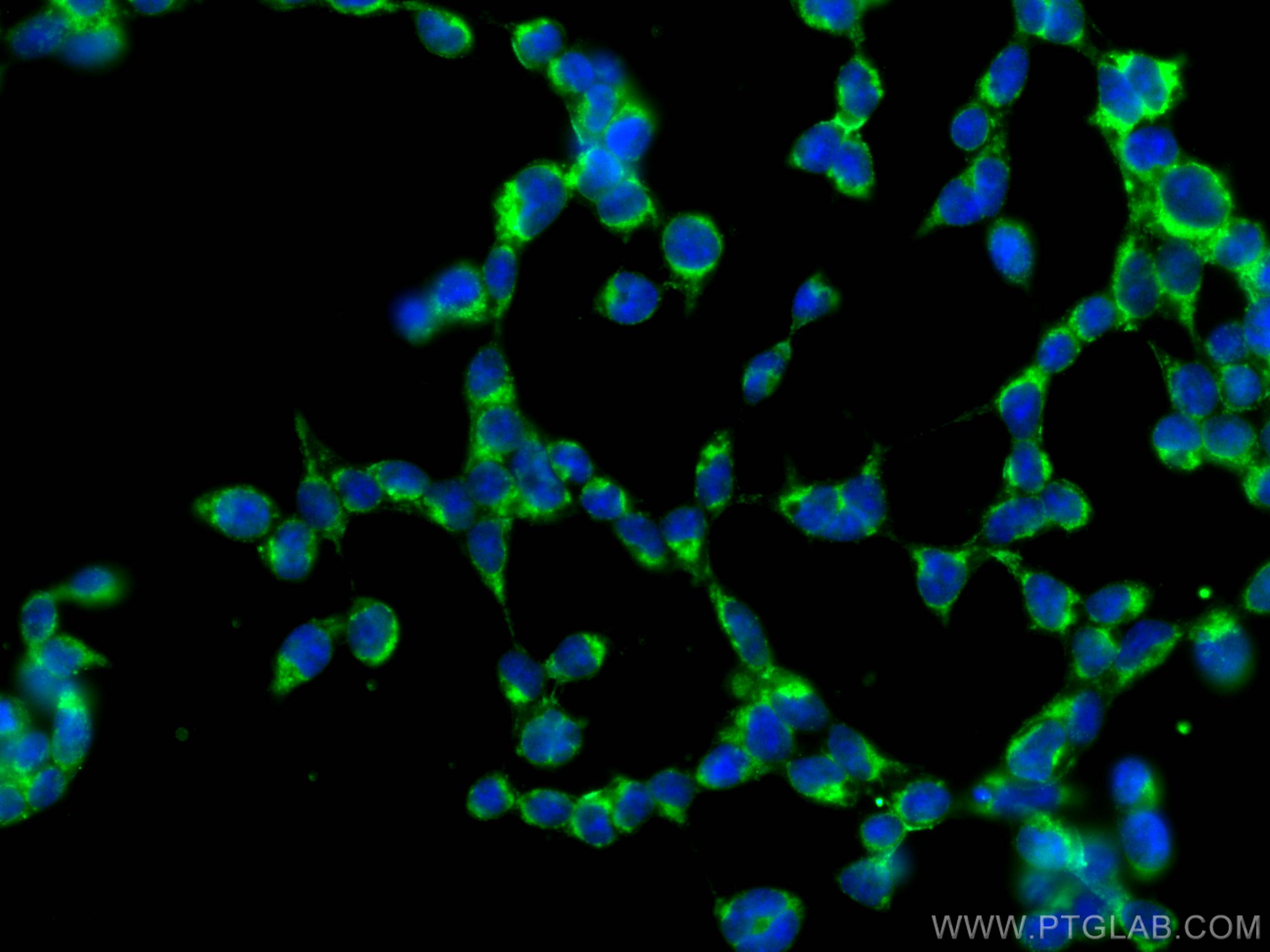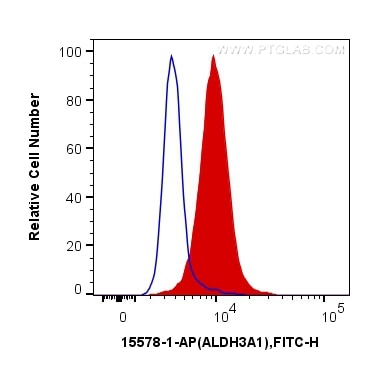- Featured Product
- KD/KO Validated
ALDH3A1 Polyklonaler Antikörper
ALDH3A1 Polyklonal Antikörper für WB, IHC, IF/ICC, FC (Intra), IP, ELISA
Wirt / Isotyp
Kaninchen / IgG
Getestete Reaktivität
human, Maus, Ratte und mehr (1)
Anwendung
WB, IHC, IF/ICC, FC (Intra), IP, ELISA
Konjugation
Unkonjugiert
Kat-Nr. : 15578-1-AP
Synonyme
Geprüfte Anwendungen
| Erfolgreiche Detektion in WB | A549-Zellen |
| Erfolgreiche IP | A549-Zellen |
| Erfolgreiche Detektion in IHC | humanes Hautkrebsgewebe Hinweis: Antigendemaskierung mit TE-Puffer pH 9,0 empfohlen. (*) Wahlweise kann die Antigendemaskierung auch mit Citratpuffer pH 6,0 erfolgen. |
| Erfolgreiche Detektion in IF/ICC | HEK-293T-Zellen |
| Erfolgreiche Detektion in FC (Intra) | HEK-293-Zellen |
Empfohlene Verdünnung
| Anwendung | Verdünnung |
|---|---|
| Western Blot (WB) | WB : 1:20000-1:100000 |
| Immunpräzipitation (IP) | IP : 0.5-4.0 ug for 1.0-3.0 mg of total protein lysate |
| Immunhistochemie (IHC) | IHC : 1:5000-1:20000 |
| Immunfluoreszenz (IF)/ICC | IF/ICC : 1:50-1:500 |
| Durchflusszytometrie (FC) (INTRA) | FC (INTRA) : 0.25 ug per 10^6 cells in a 100 µl suspension |
| It is recommended that this reagent should be titrated in each testing system to obtain optimal results. | |
| Sample-dependent, check data in validation data gallery | |
Veröffentlichte Anwendungen
| KD/KO | See 1 publications below |
| WB | See 12 publications below |
| IHC | See 3 publications below |
| IF | See 13 publications below |
Produktinformation
15578-1-AP bindet in WB, IHC, IF/ICC, FC (Intra), IP, ELISA ALDH3A1 und zeigt Reaktivität mit human, Maus, Ratten
| Getestete Reaktivität | human, Maus, Ratte |
| In Publikationen genannte Reaktivität | human, Kaninchen, Maus, Ratte |
| Wirt / Isotyp | Kaninchen / IgG |
| Klonalität | Polyklonal |
| Typ | Antikörper |
| Immunogen | ALDH3A1 fusion protein Ag7977 |
| Vollständiger Name | aldehyde dehydrogenase 3 family, memberA1 |
| Berechnetes Molekulargewicht | 50 kDa |
| Beobachtetes Molekulargewicht | 50 kDa |
| GenBank-Zugangsnummer | BC004370 |
| Gene symbol | ALDH3A1 |
| Gene ID (NCBI) | 218 |
| Konjugation | Unkonjugiert |
| Form | Liquid |
| Reinigungsmethode | Antigen-Affinitätsreinigung |
| Lagerungspuffer | PBS with 0.02% sodium azide and 50% glycerol |
| Lagerungsbedingungen | Bei -20°C lagern. Nach dem Versand ein Jahr lang stabil Aliquotieren ist bei -20oC Lagerung nicht notwendig. 20ul Größen enthalten 0,1% BSA. |
Hintergrundinformationen
ALDH3A1(Aldehyde dehydrogenase, dimeric NADP-preferring), also named as ALDH3, is a member of the ALDH superfamily, which consists of NAD(P)+-dependent enzymes that catalyse the oxidation of a wide variety of endogenously produced and exogenous aldehydes to their corresponding acids. It is expressed at high concentrations in the mammalian cornea and it is believed that it protects this vital tissue and the rest of the eye against UVlight-induced damage.(PMID:12943535). It can exsit as a dimer(PMID:16919242). This antibody is specific to ALDH3A1.
Protokolle
| PRODUKTSPEZIFISCHE PROTOKOLLE | |
|---|---|
| WB protocol for ALDH3A1 antibody 15578-1-AP | Protokoll herunterladen |
| IHC protocol for ALDH3A1 antibody 15578-1-AP | Protokoll herunterladenl |
| IF protocol for ALDH3A1 antibody 15578-1-AP | Protokoll herunterladen |
| IP protocol for ALDH3A1 antibody 15578-1-AP | Protokoll herunterladen |
| STANDARD-PROTOKOLLE | |
|---|---|
| Klicken Sie hier, um unsere Standardprotokolle anzuzeigen |
Publikationen
| Species | Application | Title |
|---|---|---|
Nat Commun Impact of keratocyte differentiation on corneal opacity resolution and visual function recovery in male rats | ||
Adv Healthc Mater Sustained Release of TPCA-1 from Silk Fibroin Hydrogels Preserves Keratocyte Phenotype and Promotes Corneal Regeneration by Inhibiting Interleukin-1β Signaling. | ||
Biofabrication Development of a novel bioartificial cornea using 3D bioprinting based on electrospun micro-nanofibrous decellularized extracellular matrix | ||
Cell Chem Biol Lipid-derived electrophiles mediate the effects of chemotherapeutic topoisomerase I poisons. |
